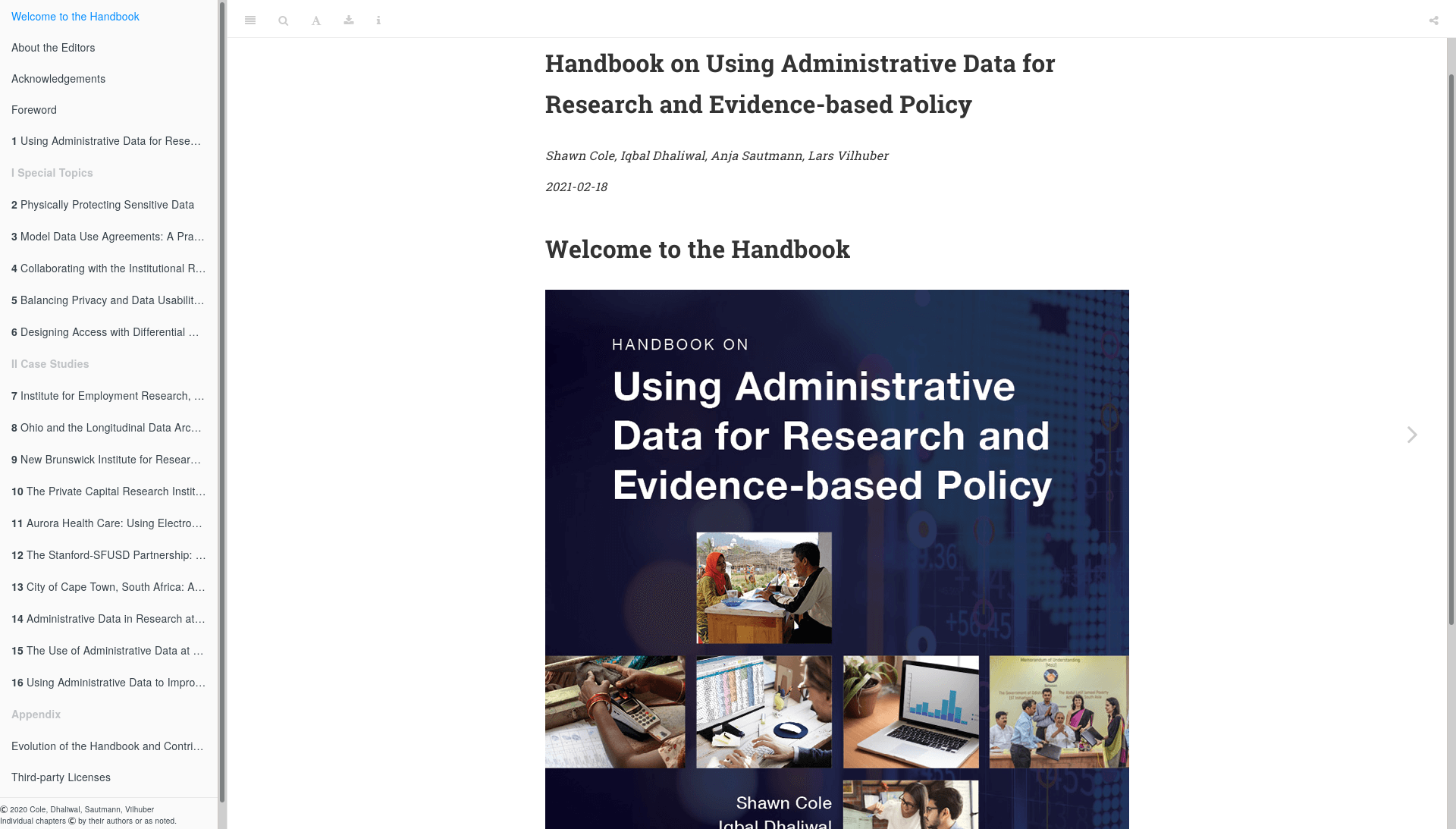Read online
Read the full Handbook for FREE online at https://admindatahandbook.mit.edu/book/. You can also download ebook versions.

Bound copy
Purchase a hardcover copy of the Handbook on Amazon US or other retailers.

Ebooks
Purchase a version for your Ebook reader:
or obtain a FREE version (works for some devices, identical to purchased version), by choosing the appropriate format:
- Epub format (works for most users)
- Kindle (azw3) format
- Kindle (mobi) format
